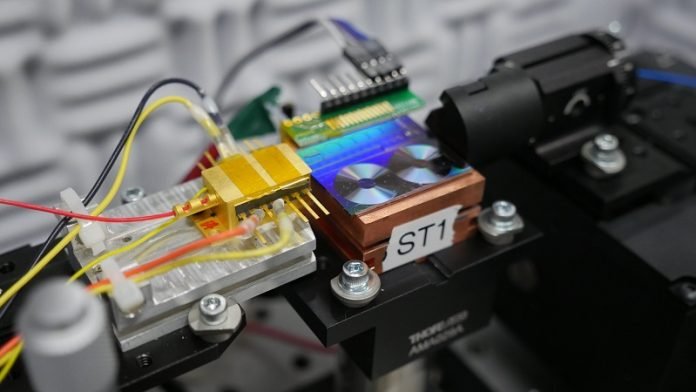
In a big leap for technology, a group of scientists from the National Institute of Standards and Technology (NIST) and their partners have developed a small, powerful chip.
This isn’t just any chip; it’s designed to turn light into microwaves, which could make a lot of our everyday technology work better.
From improving GPS and making phone and internet connections clearer to enhancing radar and various sensing systems, this chip is set to change the game.
One major problem with current technology is something called “timing jitter.” Imagine a musician trying to keep a steady beat, but occasionally they’re slightly off. Timing jitter is like that but with the timing of microwave signals.
It’s a bit unpredictable, which can cause issues. But now, thanks to this new chip, the timing jitter has been reduced to an incredibly small amount – just 15 femtoseconds.
To put that in perspective, a femtosecond is one quadrillionth of a second. This means signals are much more stable and precise, which can make things like radar more sensitive and improve the quality of digital images, especially from telescopes looking at the stars.
What’s really special about this new chip is its size. The scientists have managed to shrink what used to be a huge system down to something as small as a digital camera memory card. This not only saves space but also reduces the amount of power needed, making it easier to use in a wide range of devices.
Currently, some parts of this technology are being tested outside the chip, but the goal is to get everything – lasers, modulators, detectors, and more – all onto one single chip.
This would make the system even smaller and more efficient, meaning it could be added to devices without needing a lot of power or special expertise to operate.
“The current technology takes several labs and many Ph.D.s to make microwave signals happen,” says Frank Quinlan, a scientist at NIST. The team is working to make the process simpler by using light signals, which could make the technology more accessible to everyone.
The process involves using a semiconductor laser, kind of like a very steady flashlight, and directing its light into a small mirror-filled box.
Here, the light is adjusted so that it builds up power in certain frequencies, which helps keep the laser stable. This stable light is then turned into microwaves, which are very important for a lot of our technology today. These microwaves help with precise timing and synchronization, crucial for GPS, phone and internet connections, and radar.
“For example, in cell networks, accurate timing lets multiple phone calls happen at once without issues,” explains Quinlan. This technology could also help astronomers get clearer images of space and improve radar for detecting planes or weather patterns.
This project is a team effort, with researchers from universities and institutions across the country coming together. It shows how working together and combining knowledge from different fields can lead to exciting new advancements.
“We all work together really well to keep things moving forward,” Quinlan adds, highlighting the collaborative nature of this groundbreaking work. This new chip could soon make a wide range of technology more reliable, efficient, and accessible to everyone.
The study was published in Nature.



